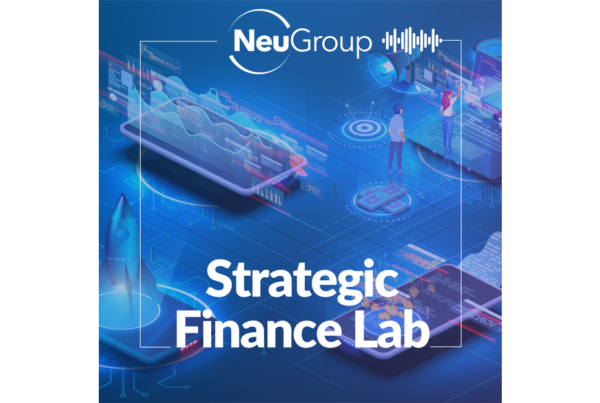
Treasurers discuss balancing the need for liquidity with keeping cash levels moderate as business ebbs and flows.
Decisions about capital allocation help treasury pave the way for the road ahead and may take on added importance for businesses generating lots of cash—as well as for those whose growth is downshifting. Treasurers at a recent NeuGroup meeting of life sciences companies shared approaches to the challenges of allocating capital during a variety of scenarios and situations.
Optimal capital allocation amid uncertainty. One treasurer told the group that his team is taking “a step back” to consider the optimal capital structure for the circumstances facing his life sciences company, including binary events where the outcome is either a win or a loss:
- A patent challenge that could lead to generic competition earlier than anticipated on a top-selling drug.
- Waiting for the FDA to approve or reject a new drug that could significantly broaden the product line.
- Bonds maturing and a revolving credit facility up for renewal in 2020.
Flexibility desired. Given the number of possible outcomes, the treasurer wanted to position the company to have “balance sheet flexibility.” He asked how others in the group are looking at leverage to construct a capital structure flexible enough to “do large business development” but not carry “too much cash.”
- After considering various scenarios, the treasurer is considering raising the company’s leverage while avoiding having its ratings lowered.
- If it were just up to him, he would let the company’s revolver expire and not renew it because of a considerable cash balance and the fact that its capital markets issuance will likely be limited to “one big bond deal” in the next five years.
- He’s confident that given the company’s credit rating he will almost always be able to access the capital markets—or obtain funding through banks, based on the large number of them soliciting business.
- About a month after the meeting, the company’s board authorized a $5 billion stock repurchase program, “adding additional share repurchase capacity to the toolbox,” he said.
Share buybacks. The subject of stock repurchase programs like the one approved by the company referenced above generated a range of commentary at the meeting, including one member who said life sciences companies that are enjoying a surfeit of cash because of large profit margins often decide to buy their own stock because if they don’t, “someone else”—an activist shareholder—will force them to do it.
- The perceived threat of activist shareholders was among the reasons another treasurer at the meeting cited for actions his company took in the wake of selling an asset for billions of dollars a few years ago. “We did have some activists sniffing around because when you have that much cash, they want a return vs having it foolishly spent in the eyes of investors,” he said.
Adapting to change. This treasurer described the transition from “running the tanks fairly dry” in terms of cash before the sale of the asset to having a switch flipped, forcing the company to decide how to redeploy a surplus of cash. It considered business development, debt paydowns and shareholder returns. Contemplating the different combinations involved questioning the market’s view of the company’s identity. “Are we still growth pharma or are we something else,” the treasurer said.
Seeking guidance. This company sought the advice of rating agencies and engaged with their advisory services as it weighed how much cash to keep. Because it had sold assets that were accretive to EBITDA, it elected to pay down billions of dollars in debt so its leverage ratio didn’t spike, focusing on term loans that allowed the treasurer to “delever the balance sheet quickly.” He added that EPS dilution is another issue to consider when a company sells accretive assets and contemplates share buybacks.
Dividend dynamics. In addition to expandingits share buyback program, this company decided to initiate a dividend (after deciding against a major acquisition). This, too, came after treasury consulted with credit rating agencies to make sure its ratings wouldn’t be lowered after initiating the dividend.
- In discussing the size of dividends, one treasurer said that “no one cares” about a dividend that is too small. Another made the point that investors expect dividend growth and that once you start paying one “you can’t shut it off.” For that reason, a third person said that stopping a dividend can have bigger implications than curtailing a share buyback program.
- One treasurer said his company was once considered a growth company by investors but not so much any longer; but it doesn’t pay a dividend, something investors expect from a value stock. He said this raises the risk that the company is viewed an “orphan”—one investors don’t know how to classify.
Communicating with shareholders. The company whose cash levels soared after selling the asset received lots of questions from investors, including activists. Leadership communicated its capital allocation plans and leverage ratio goals on earnings calls.
- Another treasurer said addressing cash balances and capital allocation are major priorities, has discussed the issue with the board, and for the first time the company “verbalized” its capital allocation strategy on an earnings call and announced the initiation of a $1 billion stock buyback program. Management also stressed that investing in internal research and advancing the pipeline remains its top priority.
A pipeline priority, a cash flow model. One treasurer who described his pharmaceutical company’s capital allocation process and model emphasized that it starts with “the pipeline” and “how the business uses cash.” He said that like other members, the goal is to have the flexibility to respond to business needs quickly by anticipating how much liquidity could be required for different scenarios. He noted that tax reform in late 2017 represented a milestone in the company’s approach to cash and capital allocation.
This cash flow-based model approach involves:
- Examining the business’s R&D, M&A and collaboration needs.
- Determining the right amount of leverage and desired credit ratings after establishing relationships with rating agencies.
- After determining how much is needed to satisfy those cash flow needs, the company decides how much to allocate to shareholder returns through buybacks and dividends.


